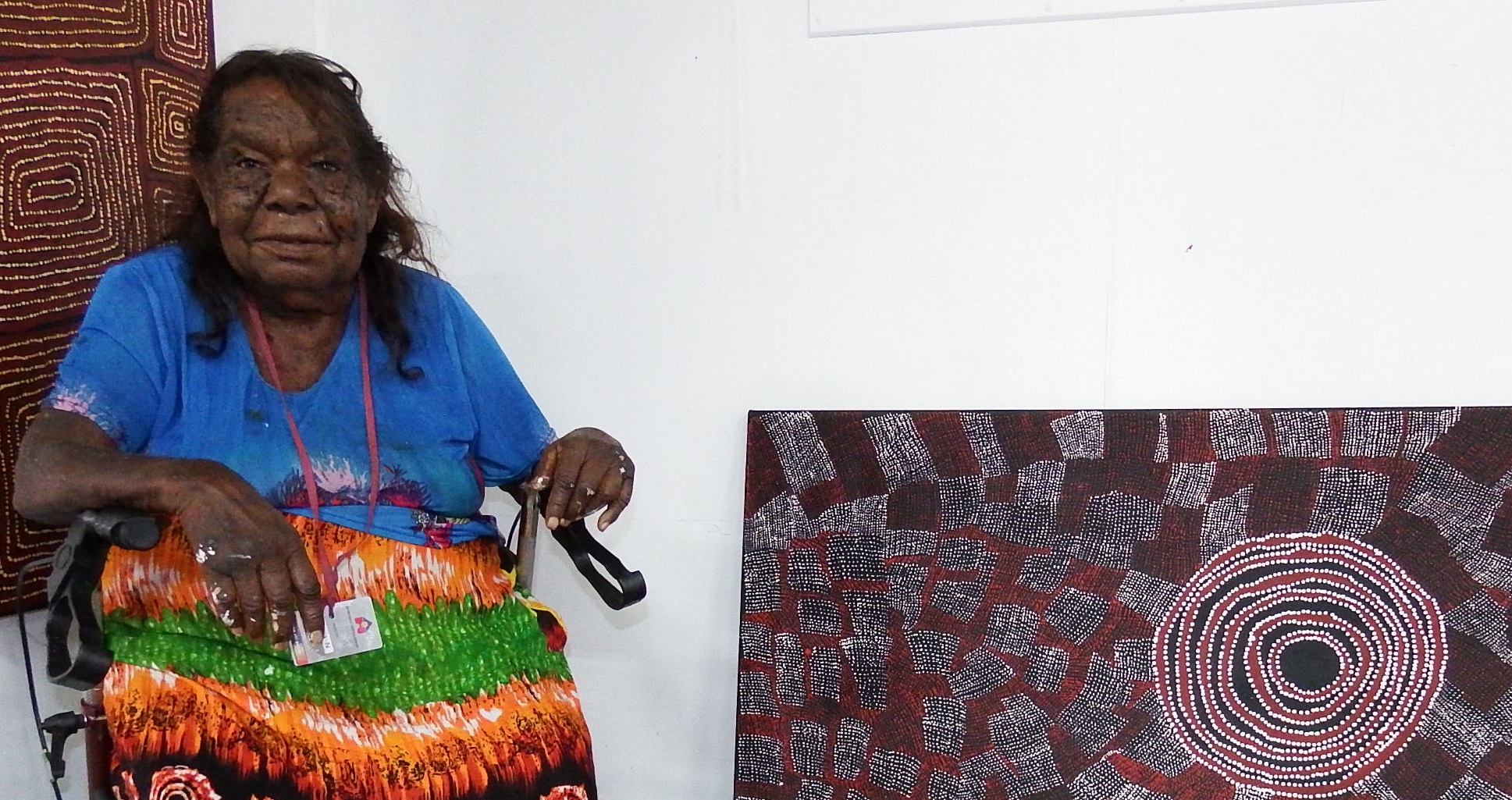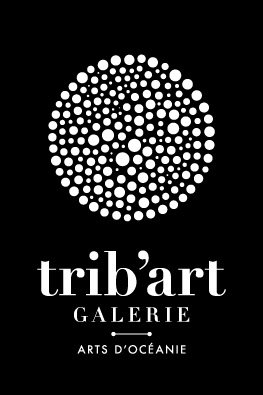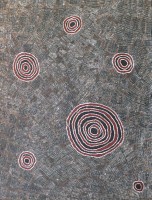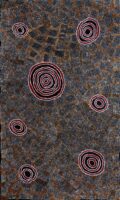Wentja Morgan Napaltjarri
Wentja Morgan Napaltjarri est une artiste d’une grande intégrité et d’un talent immense. Elle transmet continuellement son patrimoine symbolique et culturel.
Wentja est née à Malparinga en 1945, un site rocheux situé près de la pointe sud-ouest de Wilkinkarra (lac Mackay), en A ustralie occidentale.
ustralie occidentale.
Elle a commencé à peindre pour Papunya Tula en 1996. Plus tôt, en apprentissage chez son père, on lui a confié bon nombre des Tjukurrpa de son père et des animaux qui y figurent, notamment des bandicoots, des échidnas et des goannas.
Ce site allait devenir l’un des principaux Tjukurrpa (sujet de rêve) de l’artiste. Il est associé au Lungkata, l’homme-lézard à la langue bleue (blue tong lizard), sur l’itinéraire emprunté par les femmes ancestrales du Kungka Tjukurrpa. Ce temps du rêve (ou cette histoire) est lié au vaste et sacré cycle Tingarri du peuple Pintupi. Ce cycle est lié à initiation et l’apprentissage des jeunes hommes.
Le temps du rêve
Le parcours des femmes Tingarri a commencé à l’ouest de Jupiter Well et s’est finalement déroulé plein est, jusqu’au sud-est de Wilkinkarra. Les anciens des ancêtres ont effectué des rituels et ont ouvert le pays alors qu’ils se déplaçaient et campaient dans de nombreux trous de pierre le long du chemin, notamment à Malparinga.
Art d’Australie – Galerie d’art des aborigènes d’Australie
D.O.B: Circa 1945
Birthplace: Malparinga
Language Group: Pintupi / Luritja
Family History:
Wentja 2 Napaltjarri was born in the bush at Malparinga in the Gibson Desert and grew up west of Kintore in her father’s country. Wentja, who is the daughter of one of the founders of the Papunya Tula desert painting movement, Shorty Lungkata Tjungurrayi, has been painting all of her life. Her first paintings were collaborative, helping out the men in the family with their work. While they painted the stories or iconographic elements, Wentja did the in-fill dotting, characteristic of the Pintupi desert artists.
Wentja Napaltjarri’s own career began when she created her first paintings for Watiyawanu Artists at Amunturrngu. Since that time Wentja has achieved high recognition for her work and in 2002 she was a finalist in the Telstra National Aboriginal and Torres Strait Islander Art Award.
The main subjects for Wentja’s paintings are Blue Tongue Lizard and Water Dreaming stories, handed down from her father. Wentja also paints sand hills, rockholes, and other landmarks associated with water and Desert Oaks. Wentja’s paintings are less geometric than her father’s and show a softening of iconography through the use of intricate, finely-worked dots. This soft dotting technique is characteristic of many of the Mt Liebig women artists with whom she paints at Watiyawanu Arts Centre. Wentja’s palette reflects the warm colours of the central desert country.
Wentja Napaltjarri is a highly individual artist little influenced by other painters working around her and has developed a distinctive and consistent style characterized by subtle variations in colour and texture. She loves to paint and works for many hours each day squatting on the concrete on the front porch of her house, surrounded by family and pet dingoes. The dingoes get whacked off the canvas each time they stray onto it with a long stick kept handy for this purpose.
Wentja Napaltjarri lived her later life at Mt Liebig with her husband, Ginger Tjakamarra (son of well known artist Makinti Napanangka), and with her sons. She has three sisters who are also well known artists – Wentja 1, Tjunkiya, and Linda Syddick Napaltjarri.



